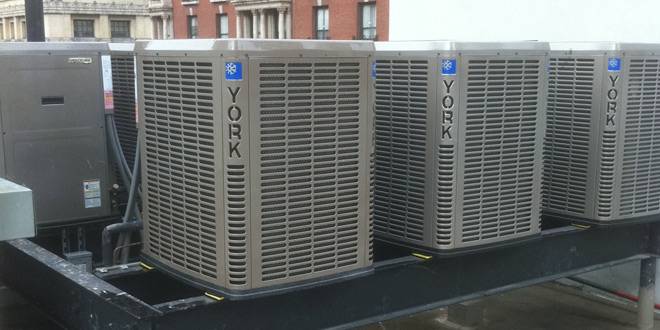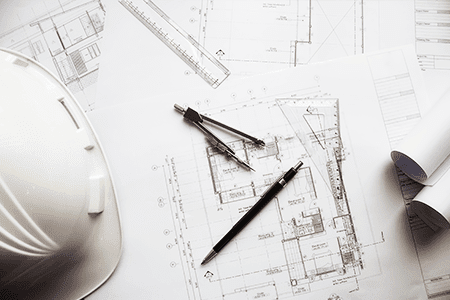
For home and business owners in Brooklyn, NY, understanding HVAC design is crucial for ensuring your space remains comfortable year-round. This guide will demystify HVAC design, showing you how it’s done and why it’s essential for both efficiency and comfort in your urban environment.
What is HVAC Design?
HVAC design refers to the process of planning and configuring the heating, ventilation, and air conditioning system of a building. A well-designed HVAC system not only maintains a comfortable indoor climate but also ensures air quality and energy efficiency. This process involves a detailed analysis of a building’s layout, insulation, window placement, and other factors that influence thermal load and air quality.
The Importance of HVAC Design

Let’s delve deeper into why HVAC design is so crucial:
Comfort:
Comfort is the most immediate benefit of a properly designed HVAC system. In places like Brooklyn, NY, where the climate can vary significantly throughout the year, maintaining a consistent indoor temperature and humidity level is essential. A well-designed HVAC system accounts for the unique layout and characteristics of each space, ensuring that warm or cool air is distributed evenly, eliminating hot or cold spots. By maintaining a stable environment, occupants can enjoy their living or working spaces more, contributing to overall satisfaction and productivity.
Air Quality:
Indoor air quality is a critical component of a healthy indoor environment. A properly designed HVAC system includes adequate ventilation and filtration components that work together to remove pollutants, allergens, and excess moisture from the air. In urban areas, where outdoor air may contain higher levels of pollutants, effective filtration and ventilation are especially important. By continuously cycling fresh, clean air into the space, an HVAC system can help prevent respiratory issues, eliminate odors, and reduce the risk of mold growth, ensuring a healthier environment for occupants.
Energy Efficiency:
Energy efficiency is a significant consideration in HVAC design, especially given the rising costs of energy and growing environmental concerns. A system that is tailored to the specific needs of a building can operate more efficiently, using less energy to achieve the desired indoor climate. This involves selecting the right size and type of equipment, optimizing the layout of ductwork, and incorporating energy-saving features like programmable thermostats and zoning capabilities. By reducing the amount of energy required for heating and cooling, a well-designed HVAC system can lead to substantial savings on utility bills and contribute to a more sustainable future.
Longevity:
The longevity of an HVAC system is directly influenced by how well it is designed and maintained. An overworked or improperly sized system may experience more frequent breakdowns and require earlier replacement. In contrast, a system that is designed with the building’s specific needs in mind will operate under less strain, leading to fewer repairs and a longer lifespan. This not only saves money on maintenance and replacement costs but also ensures that the system remains effective and efficient over time.
In conclusion, the importance of HVAC design extends far beyond simple temperature control. A well-designed system enhances comfort, improves air quality, promotes energy efficiency, and ensures the longevity of the HVAC equipment. For homeowners and business owners in Brooklyn, NY, investing in professional HVAC design services can lead to a more comfortable, healthier, and more cost-effective living or working environment.
How is HVAC Design Done?
1. Assessment of Building Characteristics
This foundational step involves a thorough evaluation of the building’s physical and architectural features. Factors such as the building’s size (square footage), orientation (which direction it faces), insulation quality (how well it retains heat), types of windows (single, double glazed, etc.), and occupancy (how many people use the space and when) are critical. This assessment helps in understanding how these characteristics impact the building’s thermal behavior and ventilation needs. For instance, a building with poor insulation or large windows facing the sun may require more cooling capacity.
2. Load Calculations
Load calculations, often performed using Manual J or equivalent computational methods, are critical for determining the precise heating and cooling needs of the building. This step involves calculating the amount of heat and cool air required to maintain comfortable temperatures across different areas, taking into account various factors such as heat gain from sunlight through windows, heat emitted by appliances and electronics, and the thermal output from occupants. Accurate load calculations ensure the HVAC system is neither over nor under-sized, optimizing comfort and efficiency.
3. System Selection
Choosing the right HVAC system is pivotal and is based on the outcome of load calculations. The selection ranges from centralized systems, ideal for large buildings needing uniform heating and cooling, to ductless mini-splits, which are suitable for smaller spaces or for areas within larger buildings that require individual temperature control. This step involves considering the building’s specific needs, the system’s efficiency, and the budget at hand to select the most appropriate HVAC solution.
4. Ductwork and Ventilation Planning
Efficient air distribution is heavily reliant on the design of the ductwork. This involves planning the layout of ducts, vents, and returns to ensure even air distribution and eliminate hot or cold spots. Additionally, adequate ventilation planning is essential to maintain indoor air quality, involving calculations to ensure there’s enough fresh air intake and proper exhaust. This step is crucial for removing contaminants and ensuring a healthy indoor environment.
5. Equipment Sizing
Correct equipment sizing is essential for system efficiency and longevity. Oversized equipment may cycle on and off too frequently, a process known as short cycling, which can waste energy and strain the system. Conversely, undersized equipment may struggle to maintain desired temperatures, leading to discomfort. This step involves using the results from load calculations to select HVAC components that are just the right size for the building’s needs.
6. Energy Efficiency Considerations
Incorporating energy efficiency measures into the HVAC design can significantly reduce operational costs and environmental impact. This includes selecting high-efficiency units that use less energy to achieve desired temperatures, installing programmable thermostats that adjust temperatures based on occupancy and time of day, and considering zoning capabilities to control temperatures in different areas independently. These features not only save energy but also enhance the system’s functionality and user control.
7. Compliance with Codes and Standards
Ensuring the HVAC system complies with local building codes and standards is crucial for safety, efficiency, and environmental protection. This step involves understanding and applying the requirements set forth by local, state, and federal regulations, which may include specifications for energy efficiency, emissions, and safety features. Compliance not only ensures the system’s legality but also its reliability and performance.
8. Final Design and Implementation
The culmination of the HVAC design process is the final design and implementation phase. This step involves creating detailed schematics that outline the exact layout of ductwork, the placement of equipment, and the configuration of electrical connections. These plans serve as a blueprint for the installation process. After the design is approved, the system is installed according to these specifications, ensuring that the finished HVAC system matches the design intent and operates as efficiently as possible.
Each of these steps is critical in the HVAC design process, ensuring that the final system is efficient, effective, and tailored to the specific needs of the building and its occupants.
The Role of HVAC Professionals

Designing an HVAC system requires specialized knowledge and expertise. HVAC professionals use advanced software and tools for load calculations and design. They also stay updated on the latest HVAC technologies and building codes to ensure that your system is efficient, compliant, and tailored to your specific needs.
HVAC design is a complex but crucial process that impacts the comfort, air quality, and energy efficiency of your home or business. By understanding the basics of how HVAC design is done, you can make informed decisions about your system and ensure it meets your needs.
Elevate Your Comfort with Expert HVAC Design 🌡️🏠
Ready to optimize your space with a professionally designed HVAC system? Iceberg Mechanical Corp specializes in creating custom HVAC solutions that cater to the unique needs of Brooklyn’s homes and businesses. Experience unparalleled comfort and efficiency with a system designed just for you by our amazing mechanical engineering team. Reach out today, and let’s transform your indoor climate together.





